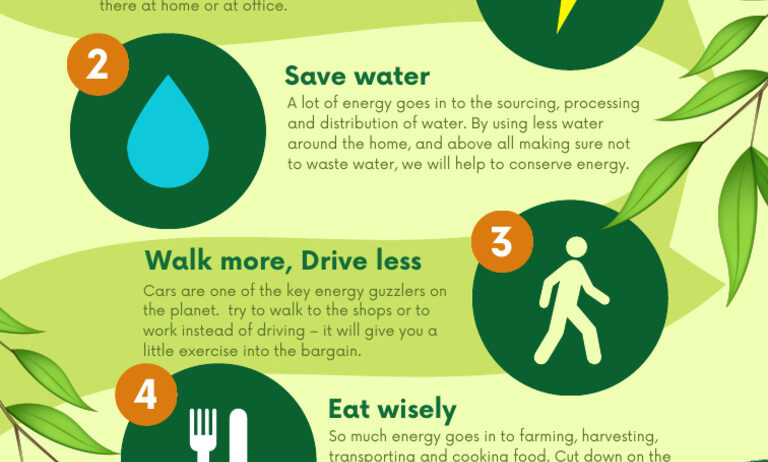Energy conservation in the natural world is an intricate tapestry of survival strategies employed by organisms in response to the pressures of their environment. From the vast expanses of the savannah to the depths of the ocean, life has innovatively adapted to optimize energy usage, ensuring the continuity of species. This examination delves into the multifaceted ways organisms conserve energy, illuminating the sophisticated mechanisms that underpin biological survival.
Metabolic Efficiency: The Foundation of Energy Conservation
At the core of energy conservation is metabolic efficiency. The metabolic rate of an organism determines how quickly it converts food into usable energy. Homeothermic animals, such as birds and mammals, maintain a constant body temperature through metabolic processes, which inherently demand higher energy input. Conversely, ectothermic organisms like reptiles and amphibians rely on external environmental temperatures to regulate their bodily functions. This evolutionary divergence allows ectotherms to conserve energy significantly by entering states of dormancy during cooler periods, such as hibernation or brumation, thereby drastically reducing metabolic activities.
Behavioral Adaptations: Strategic Energy Usage
Behavioral adaptations manifest vividly in the daily lives of various species, where energy conservation tactics are cleverly woven into their routines. Many birds, for instance, engage in migratory patterns, traveling thousands of miles to forage in regions with ample food resources. This seasonal movement optimizes their energy expenditure, as food is more readily available in the warmer climates, thereby enhancing their reproductive success.
Additionally, social species such as wolves and lions exhibit cooperative hunting strategies, where the energy expended by individuals is synergistically minimized through collective action. By employing techniques like ambush or pacing, these predators optimize their chances of a successful hunt while conserving energy for the critical phases of their lifecycle, such as nurturing their young.
Physiological Adaptations: Structural Innovations for Energy Preservation
Organisms have developed astonishing physiological adaptations that enhance their ability to conserve energy. One compelling example is the art of camouflage, as utilized by many insects and reptiles. By blending seamlessly with their surroundings, these creatures minimize their risk of detection by predators, thereby reducing the need for energy-inefficient escapes. The use of cryptic coloration derives from evolutionary pressures and represents a clever utilization of energy that circumvents the costly expenditures associated with overt survival behaviors.
Furthermore, certain species exhibit specialized structures that facilitate energy conservation. The thick blubber of marine mammals serves both as insulation and as a significant energy reserve. Such adaptations enable these animals to endure harsh environmental conditions while relying on stored energy when food is scarce, showcasing a remarkable efficiency in resource management.
Hibernation and Estivation: Natural Energy Reservoirs
During periods of environmental extremity, many organisms employ hibernation and estivation as potent energy-conserving strategies. Hibernation, common among mammals, entails a profound physiological decline in metabolic rate during the cold winter months. For example, bears—much larger than many of their hibernating counterparts—can enter a state where their heart rate drops, their body temperature cools, and they exist for weeks without food. This spectacular adaptation allows them to survive in conditions where foraging would be futile.
Estivation, on the other hand, is a strategy employed by various species to endure extreme heat or drought. For instance, certain amphibians can enter a state of torpor, encasing themselves in a cocoon of secreted mucous that protects them from desiccation. They are able to “turn off” their metabolic processes, effectively waiting for more favorable conditions to resume their lives. This incredible capacity for dormancy highlights the complex interplay between environmental factors and energy conservation.
Resource Utilization: The Role of Symbiosis
Another layer to energy conservation strategies involves symbiotic relationships that optimize resource use and energy conservation. For example, clownfish and sea anemones engage in a mutually beneficial relationship; clownfish gain protection from predators by residing among the anemone’s stinging tentacles, while the anemone benefits from the nutrients provided by the clownfish’s waste. This intricate relationship showcases how organisms can share resources to minimize their energy expenditure and enhance survival probabilities.
Moreover, photosynthetic organisms such as algae and certain plants utilize the sun’s energy in a process that not only fuels their growth but also produces oxygen vital for many other life forms. Through photosynthesis, they convert light energy into chemical energy, which sustains entire ecosystems and influences global energy dynamics.
Technological Implications: Lessons from Nature
As the anthropogenic impacts of climate change loom ever larger, the strategies employed by organisms in nature serve as inspiration for human innovation. Biomimicry, the practice of emulating nature’s designs to solve complex human problems, draws from these remarkable adaptations. For instance, energy-efficient buildings might be designed after termite mounds, which maintain constant temperatures despite external conditions, or solar panels that mimic the angle and functionality of leaves in photosynthetic organisms.
The urgent need for sustainability urges society to reconsider its energy consumption patterns. By grasping the principles of energy conservation observed in the natural world—whether through behavioral, physiological, or symbiotic adaptations—humans can foster a deeper understanding of resilience and sustainability.
The Path Forward: Embracing Energy Conservation
The survival strategies employed by organisms to conserve energy are as varied as life itself, underscoring a profound interconnectedness across species and ecosystems. Understanding these tactics offers more than just a glimpse into the mechanisms of survival; it beckons a transformative perspective towards our relationship with the environment. By recognizing the intricate methods nature employs to sustain life, humanity can cultivate a more responsible stewardship of the planet, championing energy conservation not only as a survival strategy but as a moral imperative in the face of climate change.








